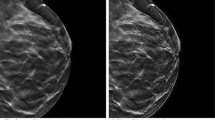Abstract
Pulse Coupled Neural Network (PCNN) has gained widespread attention as a nonlinear filtering technology in reducing the noise while keeping the details of images well, but how to determine the proper parameters for PCNN is a big challenge. In this paper, a method that can optimize the parameters of PCNN by combining the genetic algorithm (GA) and ant colony algorithm is proposed, which named as GACA, and the optimized procedure is named as GACA-PCNN. Firstly, the noisy image is filtered by median filter in the proposed GACA-PCNN method; then, the noisy image is filtered by GACA-PCNN constantly and the median filtering image is used as a reference image; finally, a set of parameters of PCNN can be automatically estimated by GACA, and the pretty effective denoising image will be obtained. Experimental results indicate that GACA-PCNN has a better performance on PSNR (peak signal noise rate) and a stronger capacity of preserving the details than previous denoising techniques.









Similar content being viewed by others
References
Zhu, Z., et al.: Impulse noise filter via spatial global outlier measurement. J. Electr. Imaging. 24(5), 1–14 (2015)
Gonzalez, R.C., et al.: Digital image processing, pp. 484–486. Prentice Hall Inter. 28(4), 484–486 (2002)
Burgess, A.: Effect of quantization noise on visual signal detection in noisy images. J. Opt. Soc. Am. A Opt. Image Sci. 2(9), 1424–1428 (1985)
Garnett, R., et al.: A universal noise removal algorithm with an impulse detector. IEEE Trans. Image Process. 14(11), 1747–1754 (2005)
Wang, J., Wang, M., Hu, X.G., Yan, S.C.: Visual data denoising with a unified Schatten-p norm and I(q) norm regularized principal component pursuit. Pattern Recogn. 48, 3135–3144 (2015)
Li, H.J., Suen, C.Y.: A novel non-local means image denoising method based on grey theory. Pattern Recogn. 49, 237–248 (2016)
Ritenour, E.R., et al.: Applications of the median filter to digital radiographic images. Acoustics, speech, and signal processing. In: IEEE international conference on ICASSP ’84. 9, 251–254 (1984)
Bhadouria, V.S., et al.: A new approach for high density saturated impulse noise removal using decision-based coupled window median filter. Signal Image Video Process. 8(1), 71–84 (2014)
Lu, C.-T., et al.: Denoising of salt-and-pepper noise corrupted image using modified directional-weighted-median filter. Pattern Recogn. Lett. 33(10), 1287–1295 (2012)
Ji, L., et al.: A mixed noise image filtering method using weighted-linking PCNNs. Neurocomputing 71(s 13–15), 2986–3000 (2008)
Johnson, J.L., et al.: PCNN models and applications. IEEE Trans. Neural Netw. 10(3), 480–498 (1999)
Zhang, D., et al.: Pulse coupled neural network based anisotropic diffusion method for 1/f noise reduction. Math. Comput. Model. 52(s 11–12), 2085–2096 (2010)
Ma, Y.D., et al.: A new impulse noise filter based on pulse coupled neural network. J. Biomed. Eng. 21(6), 1019–1023 (2004)
Ma, Y.D., et al.: Gaussian noise filter based on PCNN. In: IEEE international conference neural networks and signal processing. 1, 149–151 (2003)
Ma, Y.D., et al. Y.: A novel algorithm of image gaussian noise filtering based on PCNN Time Matrix. In: IEEE international conference on signal processing and communications. 1499–1502 (2007)
Ji, L., et al.: An improved pulse coupled neural network for image processing. Neural Comput. Appl. 17(3), 255–263 (2008)
Zhang, D., et al.: Image denoising using pulse coupled neural network with an adaptive pareto genetic algorithm. IEEJ Trans. Electr. Electr. Eng. 6(5), 474–482 (2011)
Kozek, T., et al.: Genetic algorithm for CNN template learning. IEEE Trans. Circ. Sys. I Fundam Theory Appl. 40(6), 392–402 (1993)
Ryu, J., et al.: Noise reduction in CMOS image sensor using cellular neural networks with a genetic algorithm. IEICE Trans. Inf. Syst. 93–d(2), 359–366 (2010)
Bergen, S., et al.: Automatic and interactive evolution of vector graphics images with genetic algorithms. Vis. Comput. 28, 35–45 (2012)
Mi, N., et al.: Optimal spatial land-use allocation for limited development ecological zones based on the geographic information system and a genetic ant colony algorithm. Int. J. Geograph. Inf. Sci. 29(12), 2174–2193 (2015)
Pang, S., et al.: An improved ant colony optimization with optimal search library for solving the traveling salesman problem. J. Comput. Theor. Nanosci. 12(7), 1440–1444 (2015)
Tabakhi, S., Moradi, P.: Relevance-redundancy feature selection based on ant colony optimization. Pattern Recogn. 48(9), 2798–2811 (2015)
Tabakhi, S., et al.: Gene selection for microarray data classification using a novel ant colony optimization. Neurocomputing 168, 1024–1036 (2015)
Wang, P., et al.: An improved ant colony system algorithm for solving the IP traceback problem. Inf. Sci. 326, 172–187 (2016)
Halder, A., Ghosh, S., Ghosh, A.: Aggregation pheromone metaphor for semi-supervised classification. Pattern Recogn. 46(8), 2239–2248 (2013)
Chaari, I., et al.: smartPATH: a hybrid ACO-GA algorithm for robot path planning. Evol Comput CEC IEEE Congr IEEE 22, 1–8 (2012)
Chao, K., et al.: Application of the hybrid algorithm combining ant colony optimization algorithm with microgenetic algorithm to the optimization of multilayered radar absorbing coating. Microw. Millim. Wave Technol. 2, 597–600 (2008)
Cao, C., et al.: The application of the genetic algorithm-ant algorithm in the geometric constraint satisfaction guidelines. In: IEEE international conference on cognitive informatics. 1, 101–106 (2006)
Hoseini, P., et al.: Hybrid ant colony optimization, genetic algorithm, and simulated annealing for image contrast enhancement. Evol Comput CEC 1–6 (2010). doi:10.1109/CEC.2010.5586542
Chne, Y., et al.: Improved combination of genetic algorithm and ant colony algorithm. J. Chin. Agric. Mech. 34, 246–249 (2014)
Hong, Y., et al.: A comprehensive comparison between real population based tournament selection and virtual population based tournament selection. In: IEEE congress on evolutionary computation. 445–452 (2007)
Acknowledgments
This work was supported in part by the National Natural Science Foundation (61603353), the Research Project Supported by Shanxi Scholarship Council of China (2015-082), the College Funding of North University of China (110246).
Author information
Authors and Affiliations
Corresponding author
Rights and permissions
About this article
Cite this article
Shen, C., Wang, D., Tang, S. et al. Hybrid image noise reduction algorithm based on genetic ant colony and PCNN. Vis Comput 33, 1373–1384 (2017). https://doi.org/10.1007/s00371-016-1325-x
Published:
Issue Date:
DOI: https://doi.org/10.1007/s00371-016-1325-x




